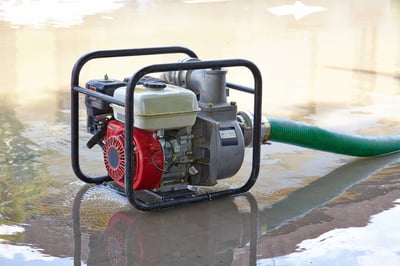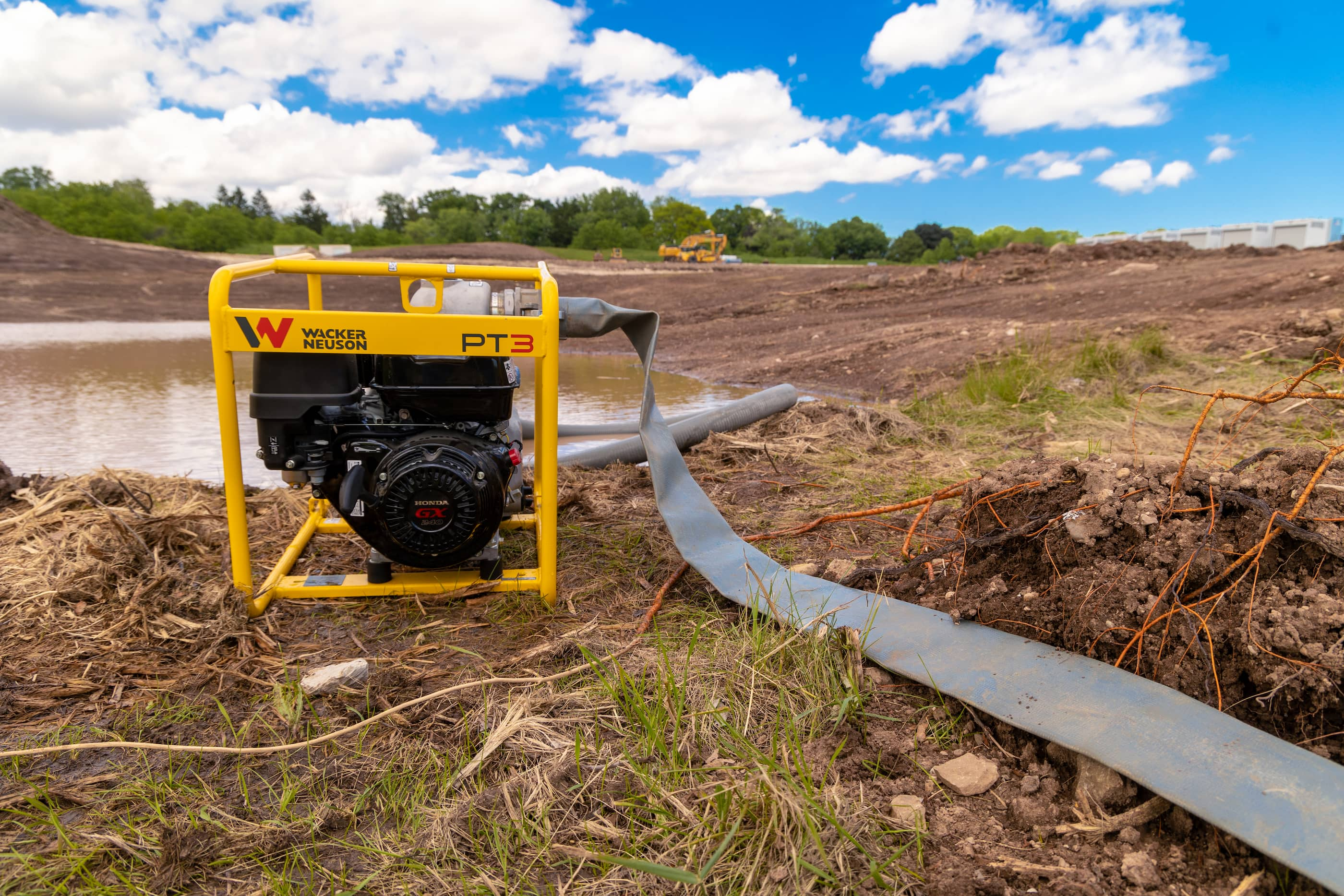- Home
- Supply Insights
- Understanding Trash Pumps: A Water Operator’s Guide to Efficient Fluid Management
As a water operator, you’re no stranger to the challenges of managing water in environments where debris, sludge, and solids are part of the equation. Whether you’re dewatering a construction site, handling wastewater in municipal systems, or managing floodwater during a storm, having the right equipment is critical. Trash pumps, designed to handle water laden with solids, are indispensable tools for water operators tackling tough fluid management tasks. We’re here to break down what makes these pumps essential, how they work, and why they’re a must-have for your operations.
What Is a Trash Pump?
A trash pump is a heavy-duty centrifugal pump engineered to move large volumes of water containing hard and soft solids like leaves, twigs, sand, sludge, and even small rocks. Unlike standard water pumps, which are optimized for clean water and can clog or fail when debris is present, trash pumps feature larger impellers, wider discharge openings, and robust construction to prevent clogging and ensure reliable performance. These pumps are ideal for demanding applications where water is murky, muddy, or filled with debris.
For water operators, trash pumps are the go-to solution for scenarios where standard pumps fall short, such as wastewater treatment, flood control, and dewatering operations.
Key Applications for Water Operators
Trash pumps are versatile tools that shine in a variety of water management tasks. Here are some common applications where they make a difference for water operators:
-
Wastewater Treatment: Trash pumps handle wastewater containing solids, such as sewage or sludge, in municipal treatment plants. They’re designed to move debris-laden water without clogging, ensuring smooth operations.
-
Floodwater Removal: During storms or flooding events, water operators often need to clear water from basements, underpasses, or streets. Trash pumps can manage water mixed with urban waste like leaves, plastics, and sediment, making them critical for emergency response.
-
Construction Site Dewatering: Excavations and trenches often accumulate muddy water with sand, pebbles, or other debris. Trash pumps efficiently remove this water, keeping sites safe and operational.
-
Agricultural and Irrigation Support: In agricultural settings, water operators use trash pumps to clear ponds, irrigation ditches, or waterlogged fields containing plant debris and sediment.
-
Municipal Drainage Maintenance: Trash pumps are ideal for clearing storm drains or managing water in urban environments where debris like twigs and paper is common.
How Trash Pumps Work
Trash pumps operate by creating a powerful suction at the inlet to draw in water and debris, which is then moved through the pump by a rotating impeller and expelled through a discharge hose. The key to their effectiveness lies in their design:
-
Large Impeller and Discharge Openings: These allow solids (typically up to 1-3 inches, depending on the pump) to pass through without clogging.
-
Self-Priming Capability: Most trash pumps are self-priming, meaning they can draw water into the pump without external assistance after initial priming, making them easy to use in the field.
-
Durable Construction: Built with materials like cast iron or stainless steel, trash pumps withstand abrasive and corrosive fluids, ensuring longevity in harsh environments.
To operate a trash pump, submerge the suction hose in the water source, prime the pump by filling the housing with water, connect the discharge hose, and start the engine. The impeller’s rotation creates a vacuum that pulls in water and debris, which is then forced out to the desired location. Regular maintenance, like cleaning strainers and inspecting impellers, keeps the pump running smoothly.
Types of Trash Pumps for Water Operators
Water operators can choose from several types of trash pumps based on their specific needs:
-
Centrifugal Trash Pumps: The most common type, these pumps use rotational energy from an impeller to move water and solids. They’re ideal for high-flow applications like dewatering construction sites or wastewater management.
-
Submersible Trash Pumps: Designed to operate underwater, these electrically powered pumps are perfect for deep excavations or flooded areas where the pump needs to be submerged.
-
Diaphragm Trash Pumps: These positive displacement pumps use a pulsating diaphragm to handle thick, abrasive fluids like sludge or muck, making them suitable for pond drainage or wastewater treatment. They are also known in the industry as “mud pumps.”
-
Engine-Driven Trash Pumps: Powered by gasoline or diesel engines, these portable pumps are ideal for remote locations without electricity, such as rural water management projects.




Choosing the Right Trash Pump
Selecting the right trash pump for your operation requires careful consideration of several factors:
-
Solids Capacity: Determine the size of debris you’ll encounter (e.g., 1-inch twigs or 3-inch rocks) and choose a pump with a matching solids-handling capacity. A pump designed for 1-inch solids will clog if faced with larger debris.
-
Flow Rate and Head Height: Match the pump’s flow rate (measured in gallons per minute, or GPM) and head height (the vertical distance water must be pumped) to your site’s needs. For example, a 3-inch pump might handle 200 GPM, while larger models can move up to 11,000 GPM.
-
Power Source: Choose between electric, gasoline, or diesel-powered pumps based on availability of power and portability needs. Electric pumps are quieter and more sustainable, while diesel pumps offer higher torque for heavy-duty tasks.
-
Material Compatibility: For abrasive or corrosive water, opt for pumps made of stainless steel or cast iron to ensure durability.
-
Budget and Maintenance: Consider the pump’s initial cost, maintenance requirements, and whether renting or buying is more cost-effective for your operation.
At Core & Main Supply, we carry a wide selection of trash pumps from trusted brands like AMT, Koshin, Wacker Neuson and Tsurumi, ensuring you find the right pump for your specific application.
Maintenance Tips for Longevity
To keep your trash pump performing reliably, follow these maintenance tips:
-
Clean the Strainer: Regularly clear debris from the inlet strainer to prevent clogs and maintain flow.
-
Inspect Impellers and Gaskets: Check for wear or damage to impellers and gaskets, especially after heavy use, to avoid performance issues.
-
Prime Properly: Ensure the pump is properly primed before starting to prevent damage. Self-priming models simplify this process but still require initial water filling.
-
Winterize for Storage: Drain all fluids and store the pump in a dry place during cold months to prevent damage from freezing.
-
Use Proper PPE: Wear gloves and other protective equipment when handling contaminated water to ensure safety.
Why Choose Core & Main Supply for Trash Pumps?
As a leading distributor of water and wastewater products for maintenance, repair and operations, we are committed to providing water operators with high quality equipment and expert support. Our extensive inventory includes centrifugal, submersible and diaphragm trash pumps in various sizes and power configurations to meet your needs. Whether you’re managing a municipal wastewater system or responding to a flood emergency, our team can help you select the right pump and provide guidance on maintenance and operation. Let Core & Main Supply be your partner in keeping water flowing where it belongs!
Contact us at 888-885-2673 or visit supply.coreandmain.com for more information.

